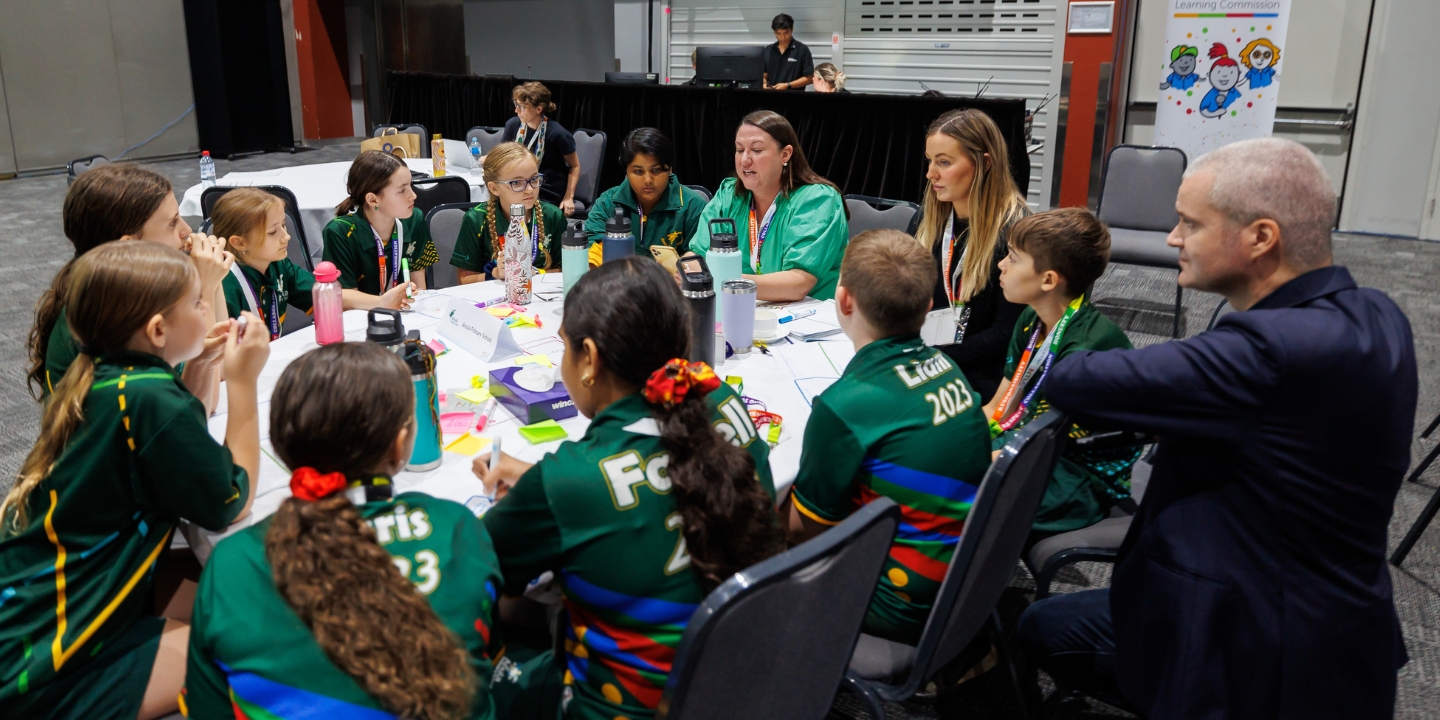On the move in the NT – to be the most improving education system in Australia

Monday, 26 Feb 2024
Five years after beginning a reform of its entire education system, the Northern Territory is seeing results and busy training the next generation of leaders to improve student outcomes, supported by the Australian Council for Educational Research.
Speaking from Larrakia country, at the onset of the wet season, John Cleary is describing how the Northern Territory will achieve its goal of becoming the most improving education system in Australia.
As a senior executive in the Territory’s Department of Education (the Department), he is invigorated from a week of inducting new principals, new teachers and ‘corporate leaders’. And while he would like to see a bit of sunshine, there is a lightness in his voice that suggests the system is working smoothly.
‘When you’re talking about the most improving system, that means that everywhere, whoever you are, whatever your starting point, that you can improve and you will improve,’ Mr Cleary says.
‘That then builds its way up from an individual to the school, to the region, to the system as a whole.’
The Australian Council for Educational Research (ACER) is a long-term ‘evidence partner’ in this goal, working with the department on critical components, including a framework to sustain the momentum.
Mr Cleary, Senior Director of the department’s Education Improvement unit, says the partnership has made the goal of improving student outcomes accessible, with a process now being shared widely.
The result is a broad expectation that everyone – no matter what their role – will understand how improvement can be achieved and be able to pursue it.
Mr Cleary and the Director of ACER’s Centre for School and System Improvement, (CSSI) Professor Pauline Taylor-Guy, presented the results at the International Congress of School Effectiveness and Improvement in Dublin last month.
They include:
-
the highest 2-year gains in years 3 to 5 in the National Assessment Program – Literacy and Numeracy (NAPLAN) between 2017 and 2019 (compared to the Australian average),
-
increases in the number of Aboriginal students receiving their Northern Territory Certificate of Education (NTCET),
-
an overall increase in the NT’s school attainment rate of 2.1 percentage points since 2022 and
-
an increase in student attendance from 73.4% in the 2022 year, to 74.5% in 2023 – an exception to the national trend.
While coming from a low base, there are also good signs in the Territory for retention rates across years 7/8 to 12. Post-COVID-19, all Australian jurisdictions experienced falls in secondary school retention rates, however the Territory’s 2022 rate represented a rise since 2018, and was the second lowest fall of all jurisdictions from 2021.
The retention rate for Aboriginal students also rose from 30.5% in 2018 to 33.2% in 2021, and again slightly in 2022.
Working in a unique environment
ACER has been developing resources that improve education systems, and the effective practices of schools, principals and teachers to support individual learners since 2009.
‘Our partnerships,’ Professor Taylor-Guy says, ‘are based on high expectations that every student – when motivated, engaged, and given appropriate learning supports and opportunities – is capable of making progress.
‘Equally important in the relationship is the intent to create a culture where there is a whole-school or system-wide commitment to the development of every student, and to being effective in progressing their achievement.’
Ensuring continuity of learning in the Territory, where the population is highly mobile, is seen by the partners as a gamechanger.
Some students might expect to attend 3 different schools a year, Mr Cleary says, as families move to access services, for cultural reasons or as part of a connected family group extending across multiple communities.
They might also travel regularly to support family businesses, like Sean, who is finishing school via distance education as he takes clients fishing at remote coastal locations, living mostly on a boat.
‘It’s incumbent upon us to try and ensure that as families are moving around the Territory, they are meeting high quality practice (in schools) wherever they go,’ Mr Cleary says.
Children should be able to ‘make at least a year’s worth of growth (in their learning) for a year’s worth of effort’.
Better information for better outcomes
The collaboration between the Territory and ACER has involved reviews in all 153 schools, building professional and practice capabilities within the system, and planning for sustainable improvement.
The reviews identified strengths and areas needing improvement by aligning those experiences with the 9 inter-related domain areas in ACER’s National School Improvement Tool.
In their Dublin presentation, the partners revealed that 71% of Territory schools consistently performed strongly in Domain 3 – showing evidence of respectful and caring relationships being fostered between staff, students and families – that will enable stronger engagement with learning.
As the second wave of school reviews begins in 2024, Mr Cleary says using the updated School Improvement Tool will bring more relevance to the Territory context, ‘and we’ve trained absolutely everyone in it’.
‘We’re a jurisdiction that’s leading some really important work and we acknowledge that there’s much to do, but the work we’ve already done puts us in a really good place to do that work well.’